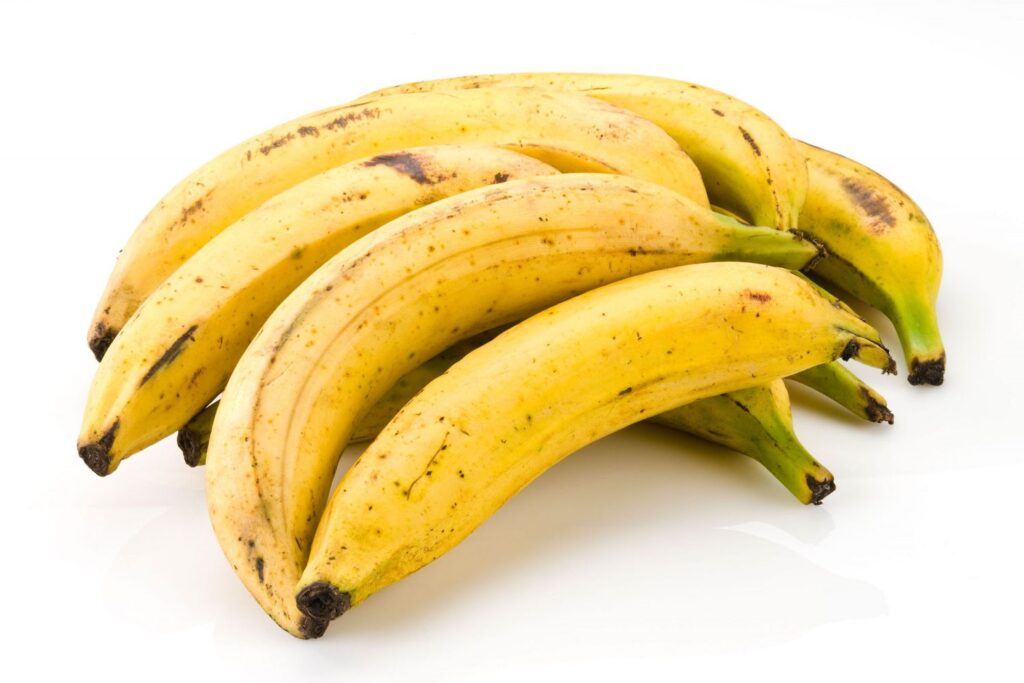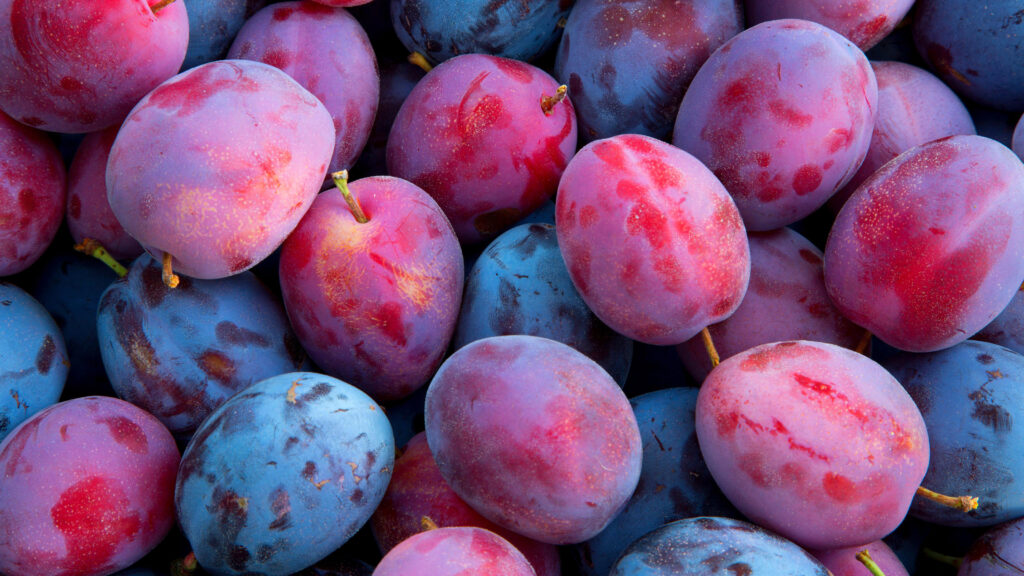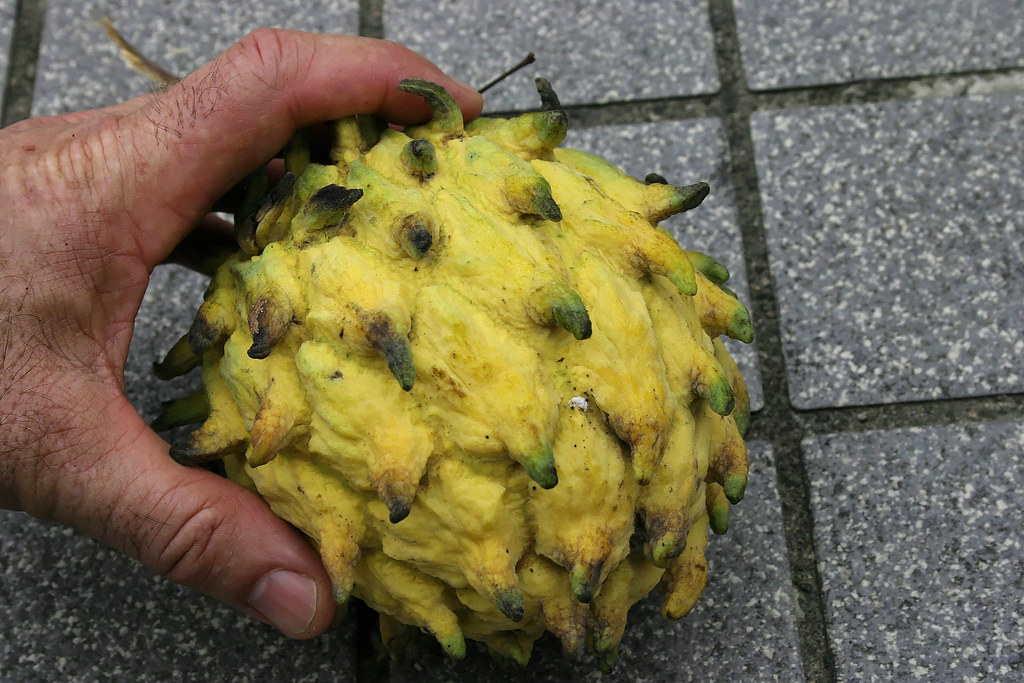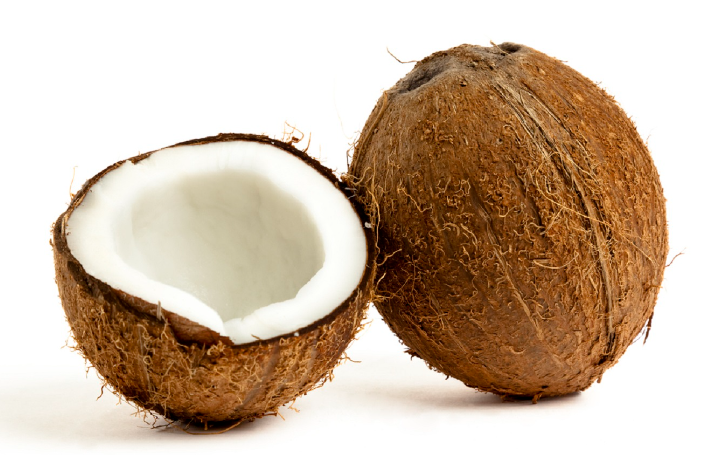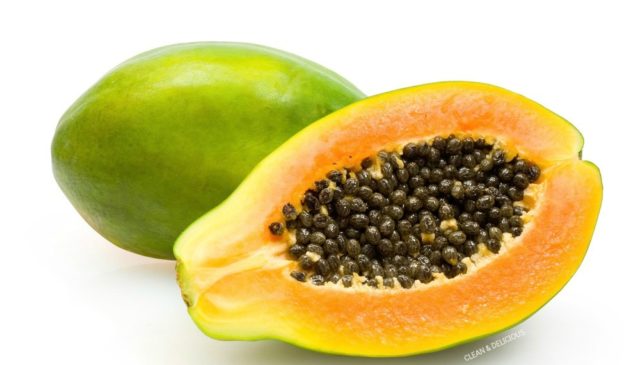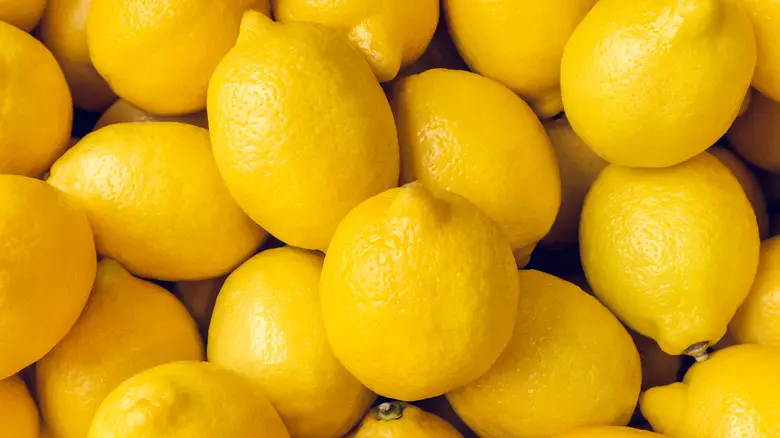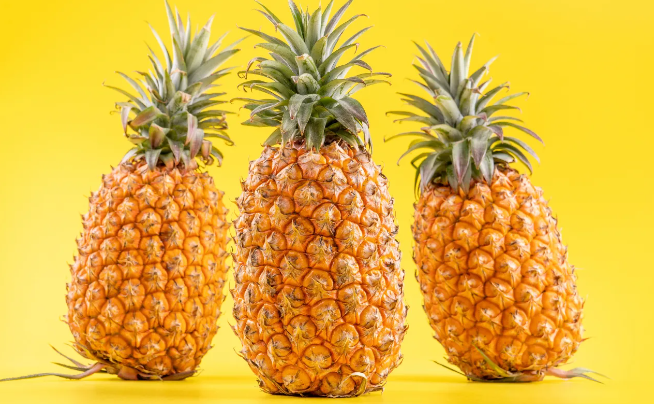Plums are a favorite fruit for many people around the world. They have a sweet, juicy inside that comes in many different colors and tastes. Whether you like the dark purple of black plums or the light sweetness of yellow ones, there’s a kind of plum for everyone.
In this article, we’ll talk about what makes plums taste so good. We’ll look at the different things that give plums their flavor and talk about how people like to eat this yummy fruit.
Plums belong to the Prunus family, which also includes cherries, peaches, and apricots. These fruits have smooth skin and come in colors like purple, yellow, and green. Inside, they have soft, juicy flesh with a hard seed that you don’t eat. Plums grow in many places around the world and they’re usually picked in the summertime.
Table of Contents
- What’s the Taste of a Plum Like?
- Understanding Plum Flavors
- 1. The Sweet Side
- 2. Tartness
- 3. Smell
- Exploring Different Kinds of Plums and Their Flavors
- 1. Black Plums
- Flavor
- How to Eat Them
- 2. Yellow Plums
- Flavor
- How to Eat Them
- 3. Red Plums
- Flavor
- How to Eat Them
- 4. Other Types of Plums
- How Should You Eat Plums?
- What’s the Smell of Plum Like?
- Can You Eat the Skin of a Plum?
- Can You Eat the Seed of a Plum?
What’s the Taste of a Plum Like?
A plum tastes sweet and juicy but can also have a little bit of a sour or tart flavor after you eat it. Black plums are rich and sweet, yellow plums have a lighter taste, and red plums are more intense and flavorful.
Understanding Plum Flavors
Plums have a taste that’s both sweet and sour, with a nice smell too. While each type of plum can taste a little different, and how ripe they are can change the flavor, usually all plums have some things in common when it comes to taste.
1. The Sweet Side
Plums are sweet because they have natural sugars like fructose, sucrose, and glucose in them.
Fructose makes plums give you quick energy. Sucrose is what gives lots of fruits their sweet taste. It’s made from glucose and fructose. Glucose is also in plums and helps our bodies and brains work right.
2. Tartness
The sour taste in plums comes from things called malic acid and citric acid.
Malic acid is what gives fruits a sharp, sour flavor. Citric acid is a bit sweeter and is used to add flavor to lots of foods and drinks.
3. Smell
Plums smell nice because they have something called volatile organic compounds (VOCs) and chemicals called esters.
VOCs are things we can smell. Plums have different kinds, like hexanal and 3-hexenol. Esters are made when organic acids and alcohols mix together, and they give plums a fruity smell. Ethyl acetate and butyl acetate are common esters in plums.
Exploring Different Kinds of Plums and Their Flavors
There are many types of plums, and each one has its own special taste and texture. Here’s a look at some of the most common plums and what’s special about them:
1. Black Plums
Black plums, or purple plums, are very common. They have dark purple skin and sweet, juicy insides.
Flavor
These plums taste very sweet, but also a bit sour after. They have a very strong “plum” flavor.
How to Eat Them
You can eat black plums on their own, but they’re also good for cooking and baking. They’re used in sweets like plum pies, cakes, and tarts, as well as in sauces and chutneys for main dishes.
2. Yellow Plums
Yellow plums have golden skin and are very sweet and juicy inside. They’re not as common as black plums but are still very tasty.
Flavor
These plums have a sweet and slightly tangy flavor that’s not as strong as black plums. They taste “light” or “delicate.”
How to Eat Them
Yellow plums are great to eat fresh, but you can also use them for cooking and baking. They’re used in jams, jellies, and sauces, and are good in fruit salads and smoothies too.
3. Red Plums
Red plums, sometimes called blood plums, have dark red skins and sweet insides. They are less common than the other types but are loved by many plum fans.
Flavor
These plums are sweet and a little sour, like black plums. They are known for their “rich” and “intense” taste.
How to Eat Them
Red plums are good to eat by themselves but can also be used in cooking and baking. People like to add them to fruit pies and tarts or even with savory dishes like grilled chicken with plum sauce.
4. Other Types of Plums
There are lots of other kinds of plums, each with different tastes and used in different ways. Here are a few:
- Green plums that taste tangy and a bit sour are often used in Korean food.
- Damson plums that are tart and slightly bitter. People usually make jam or preserves with them.
- Mirabelle plums that are very sweet and juicy, often used to make fruit brandy and liqueurs.
The way plums taste can also change based on how ripe they are, where they grow, and how they’re kept. To enjoy the best flavor, pick plums that are fully ripe and store them in a
Keep them in a cool, dry place until they’re ready to be eaten.
How Should You Eat Plums?
There are many ways to enjoy plums, depending on what you like and how people eat them in different parts of the world. Here are some of the usual ways to eat plums:
- Just as they are: Clean the plum first, then bite into its juicy body, being careful to avoid the pit inside.
- Chopped: You can slice the plum into small pieces to snack on or toss into a fruit salad.
- Over the fire: Split the plum into two, get rid of the pit, and cook it on the grill for a bit until it turns slightly brown and sweet.
- In the oven: Halve the plum and take out the pit, then place it in the oven with some sugar and cinnamon for a tasty treat.
- Made into a preserve: Create jams, jellies, or chutneys from plums by cooking them with sugar and a mix of spices.
Always clean the plum thoroughly before eating and throw away the pit, as it’s not good to eat.
What’s the Smell of Plum Like?
Plum’s scent can change based on the kind of plum and how ripe it is. In general, plums have a sweet, fruity smell like other fruits with pits, such as peaches and apricots. A fully ripe plum often has a stronger, more unique scent, while a not-so-ripe plum’s smell might be more subtle.
Can You Eat the Skin of a Plum?
Yes, you can eat plum skin. It’s usually okay to eat and is full of fiber, nutrients, and things that are good for your health like antioxidants. The skin can also make your food more interesting because of its texture. But some people might want to peel the skin off before eating if it’s very thick or tough.
Can You Eat the Seed of a Plum?
No, you should not eat the seed of a plum. It’s not meant to be eaten because it’s hard, could make you choke, and has tiny amounts of a toxic substance called cyanide. Always take the pit out before you eat the rest of the plum.

